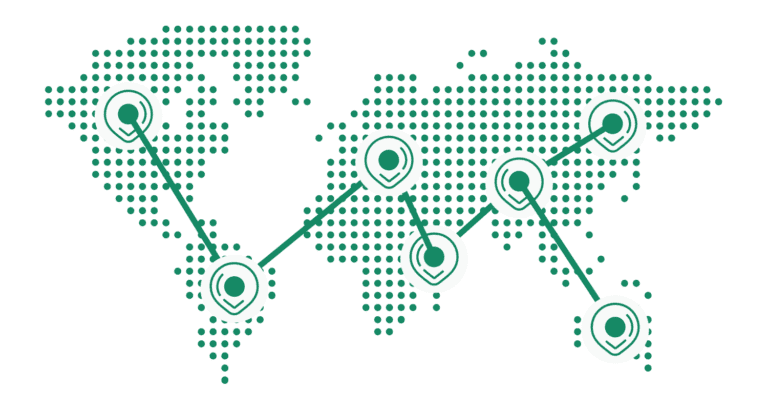Dutch enterprises have widely adopted cloud solutions: infrastructure, platforms and SaaS applications as part of their business operations. These modern solutions, like AWS, SAP, and Microsoft 365 are pivotal in the Dutch business sector’s digital transformation. They boost their scalability, enable agility, drive cross-team collaboration and increase productivity.
However, these cloud-based solutions will fail to deliver their full potential if they are not part of a high speed, optimal and secure network. Latency issues, network reliability and data breaches slow down business operations and impede business growth.
An enterprise might be using SAP or Microsoft 365, but if it relies on the public Internet its users will be plagued with slow traffic and unreliable connectivity. An organization might be enjoying the benefits of AWS, but if the IT teams decide to add a virtual firewall, they will have to go through the cumbersome and painful process of purchasing, installing, maintaining and patching the firewall. In the end, they might have that firewall, but they’ll be experiencing the friction of technical silos and lack of visibility.
SASE: high performing and secure connectivity
SASE (Secure Access Service Edge) is an enterprise networking and security solution that converges SD-WAN and Security Service Edge (SSE) functions, including FWaaS, CASB, DLP, SWG, and ZTNA, into a unified, cloud-native service. With SASE, enterprises reduce the security risks of breach and data loss, while enabling secure work from anywhere, and improving access to global applications on premises and in the cloud.
Cato Networks pioneered SASE and was named a leading SASE vendor by Gartner and Forrester. Cato’s SASE cloud runs on a private global backbone that is made up of more than 80 interconnected PoPs (Points of Presence). The PoPs’ software continuously monitors the providers for latency, packet loss, and jitter to determine, in real-time, the best route for every packet. At the same time, all enterprise traffic is decrypted and inspected. These PoPs are built to provide the same level of consistent security, connectivity and protection to all organizational entities – sites, branch offices, remote users, datacenters, etc.
Cato Networks developed SASE to solve the challenge of infrastructure complexity. For decades, complexity has been a systemic problem. This mainly entails the growing number of tools required to provide networking and security services, impacting IT’s ability to support digital transformation. As complexity grows, many organizations struggle with the resources and skills needed to deliver the security, resiliency, and agility the business needs.
With SASE, organizations can deliver and consume established networking and security features. SASE solves, once and for all, the complexity and risks that have been plaguing IT for so long.
How does SASE connect to cloud solutions?
While Cato provides connectivity and security to the organization at the network level, enterprises still need to connect to their SaaS applications, the public cloud and other cloud-based entities. Cato’s SASE easily integrates with workloads in public clouds, SaaS applications, cloud-based applications that are owned by the organization (e.g homegrown applications that the enterprise moved to the cloud for better agility and scalability), and more.
A consistent, superior and secure user experience
In all cases, Cato’s approach is the same. All the organization’s users and entities can securely access these cloud-based solutions through Cato’s global backbone (based on how the organization configured access policies). Access will take place through the closest ingress point to where the user is located (for example, through the PoP in Amsterdam), to ensure the shortest and most optimal path for packet routing. The result is an optimal experience with no latency.
In addition, users enjoy inherited protection. All organizational traffic travels through the backbone, including traffic going to and from external SaaS applications and cloud solutions. All PoPs uniformly implement all security features and the centrally-configured security policies, protecting all traffic that is within the organization’s governance that traverses through the Cato global backbone.
Lightweight integrations ensure productivity
The integration with these applications and cloud-based solutions is secure and lightweight fashion, making it operationally cost-effective and inexpensive. Since the integration isn’t deep or complex, the integration process is easy and doesn’t impede business productivity.
Simple SASE deployment
In addition, connecting the organization or a new site to Cato’s SASE is a painless process. All users need is to connect to Cato through a socket. The socket enables connection to the closest PoP in the backbone and all traffic enjoys high availability, no latency connectivity and the inherited security policies that were centrally configured.
Cato’s ability to easily connect SASE to cloud solutions offers Dutch enterprises the ability to experience the benefits of cloud applications and infrastructure, enabling them to remain innovative, competitive and in growth mode.
Learn more about the Cato SASE Cloud here.
Also read: Cato Networks: “We are the only true SASE vendor”

